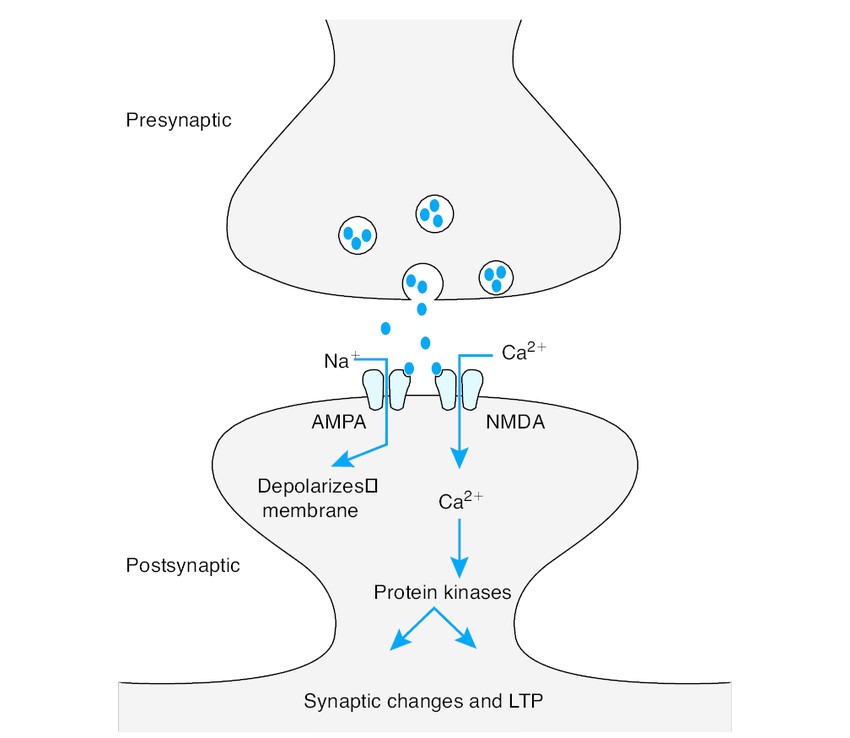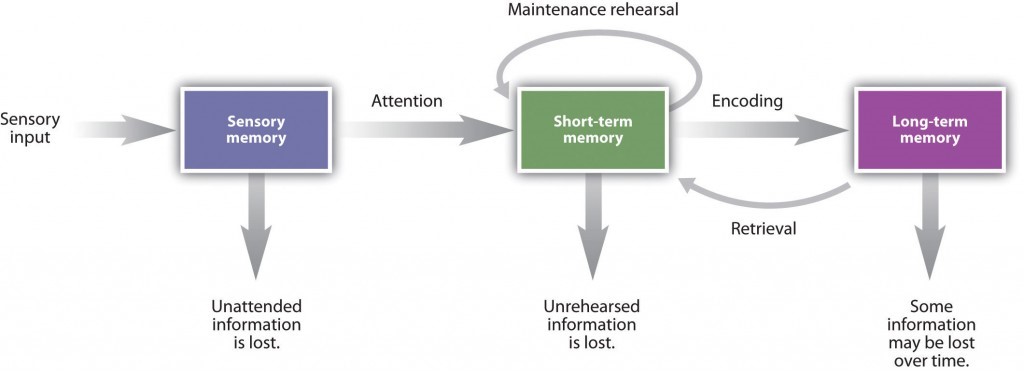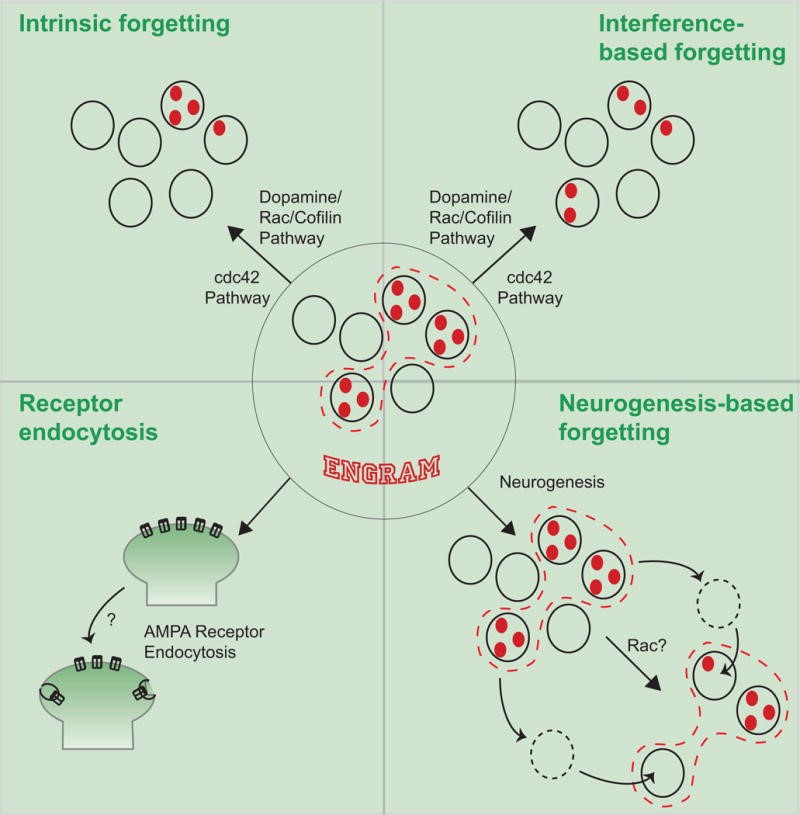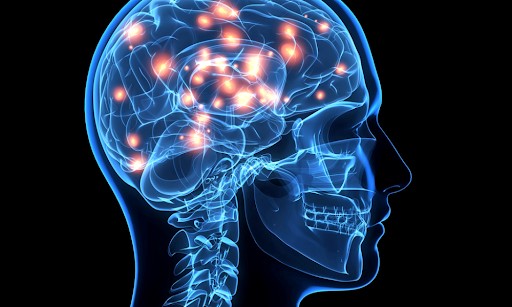The human brain regulates an array of functions necessary for survival; it makes use of our five senses to continuously monitor the spatial surroundings, contraction, and relaxation of the digestive muscles, the rhythms of breathing and a regular heartbeat. The brain houses our mind and hence, memories. We rely entirely on its information-processing capacities when we set out to learn new things. Likewise, research has provided an understanding of how signals are transmitted at the cellular and molecular level and identified several types of synapses. As the vital functions maintain the steady-state without the involvement of our conscious exertion, we are accustomed to considering the brain as preeminently the organ of thought and memory.
Learning and memorizing represent basic functions of brain.
• Learning is defined as the behavioral phenomenon that occurs when there is the amplification of several molecular and neuronal changes, which are processed and transformed by an interconnected network of neurons.
• Memory is an ontogenetically induced modification and alterations of the intrinsic brain mechanisms causing changes in the efficiency of subsequent responses, identification of the previously given signal, or reproduction of the learned response. Memories are a crucial part of our identity and play a vital potential role in guiding our behavior at every moment by reminding us of our past actions and their consequences.
Synaptic Remodeling with Learning
Stimulation of presynaptic activity that occurs with learning leads to the release of glutamate onto NMDA and AMPA receptors, depolarizing the membrane. This in-turn leads to several intracellular changes, including activation of transcription factors and translation of their downstream targets leading to growth initiation, like protein synthesis, which is then accompanied by the addition and stabilization of new spines through the insertion of new NMDA and AMPA receptors.

At the neuronal level, “Intercellular” and “Intracellular” are the two entities that can be differentiated in the process of learning and memory. When we revise or practice something we have learned, dendrites grow between nerve cells that hold the network of the previous memory. Every time we review the knowledge, the continuous mental manipulation increases activity along the connections between the nerve cells, and this makes the memory retain in our brain cells. The cerebrum, a large and outer part of the brain, controls reading, thinking, learning, emotions, speech, and planned muscle movements like walking. It also controls vision, hearing, and other senses. Different parts of the brain are associated with various functions. The amygdala is involved in fear and fear memories whereas the hippocampus is associated with declarative and episodic memory as well as memory for recognition.
Stages of Memory Formation and Storage
The formation of the human memory consists of multiple stages, which are as follows:
1. Acquisition/Encoding refers to the initial stage of memory formation in which one learns something new or acquires some information. Acquisition leads to the formation of molecular and cellular memory traces within a set of neurons – the engram cells – that store learned information.
2. Working memory refers to the retainment of the previous information to keep processing ongoing additional information, whereas short-term memory (STM) is the ability to hold the given information in mind for a relatively short period – seconds to minutes (like remembering a phone-number until you can write it down).
3. Consolidation/Long-term memories (LTM) can last for days, months, years, even a lifetime. The method by which the brain transforms the learned information into LTM is known as memory consolidation. The memory transition requires a number of molecular, cellular and structural changes that occur over time, some completing within hours or days and others extending over weeks, months, or sometimes even years; once the transition events are complete, the memory becomes stable or consolidated. If any of the phases during transition involved in consolidation gets disrupted, memory gets lost.

How Do We Forget?
Current research emphasizes the known mechanisms for active forgetting, including neurogenesis-based forgetting, intrinsic forgetting, and interference-based forgetting. Intrinsic forgetting describes the brain’s chronic signaling systems that function to degrade cellular and molecular memory traces slowly. The known characterized pathway for intrinsic forgetting involves “forgetting cells” that releases dopamine onto engram cells, mobilizing a signaling route that terminates in the activation of Rac1/cofilin to affect the changes in the actin cytoskeleton and neuron/synapse structure. Additionally, intrinsic forgetting is considered the brain’s default state, continuously promoting memories to wipe out and competing with processes that promote memory consolidation or stability.

Two pathways for active forgetting include dopamine➔Rac1➔Cofilin and cdc42 – which involve both intrinsic and interference-based active forgetting. Hippocampal-based memories are subject to active forgetting through neurogenesis degrading existing memory engrams, which may also involve the activity of Rac1. AMPA receptor endocytosis has been hypothesized to offer a fourth active forgetting mechanism operating on some types of memory. Passive forgetting can occur through at least three separate mechanisms: i) loss of context cues over time that make retrieval of information difficult, ii) interference while retrieving memories from other similar memories accumulated with time, or iii) the natural erosion of memory traces with time from the general instability of biological materials. Current research reveals that forgetting is a part in the process of learning and memorizing.
Changes can occur in the function or expression of ion channels that cause neurons to be more or less excitable accordingly, it becomes more or less capable of conducting action potentials or other electrical signals. Learning enhances neuronal growth process that establish new connections, or neurite retraction to remove existing connections. The changes primarily include adaptations in cell signaling mechanisms that modify the neuron’s overall capacity to integrate inputs from different types of signals, morphological or functional changes in synapses that increase or decrease the neuron’s ability to stimulate its synaptic partners.

